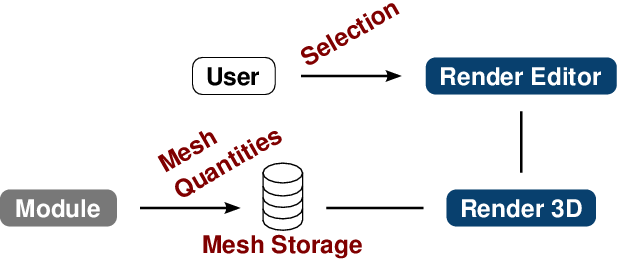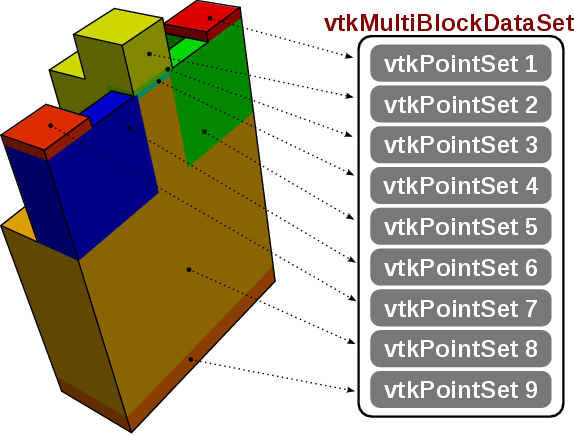
An essential ability of simulations in the general field of CSE is to visualize simulation results. Therefore, special consideration has been given to provide a flexible three-dimensional rendering backend4 . To this end the FLOSS-based VTK library is utilized as a visualization backend of a dedicated rendering class(Section 2.3), directly utilizable in Qt-based GUI applications. The rendering class provides an interface for ViennaMOS and its modules to the VTK-based visualization backend. Also, a render editor GUI is available, providing the advanced users the ability to customize the rendering (Figure 6.5). Note that the central VTK-based mesh storage is not related to the previously introduced ViennaMOS communication database. The mesh storage is solely used for the VTK-based visualization and is thus enforced to be a VTK object. Therefore, no generic storage - as provided by the ViennaMOS’ communication database - is required, otherwise unnecessarily complicating the mesh storage access.
As already indicated, the support for multi-segment meshes is essential for a simulation framework, as different areas of a simulation domain might require a different handling. For instance, different materials might be assigned to the individual segments.

Although using a multi-segment mesh for visualization is not required - as a multi-segment mesh can also be mapped to a single-segment mesh - it allows to provide segment-specific visualization options, such as segment-wise coloring or visibility adjustments. These features further improve usability, as, for instance, the framework can aid the end user in identifying individual segments of a mesh, especially important for intricate simulation devices. To this end we use VTK’s vtkMultiBlockDataSet data structure, enabling to hold an arbitrary set of VTK meshes, such as vtkUnstructuredGrid and vtkStructuredGrid (Figure 6.6). For each mesh segment, a vtkActor and a vtkDataSetMapper is stored, allowing to perform segment-specific visualization tasks, such as coloring according to vertex-based scalar fields.

Different mesh representations are supported natively by the VTK library, in particular surface, surface with edges, wireframe, and point representations, enabled by using the corresponding vtkActor methods (Figure 6.7).
Visualizing data fields on top of meshes requires the data to be stored on the respective vtkPointSet objects - representing mesh segments - collectively governed in the central vtkMultiBlockDataSet object. In particular, the data fields have to be stored as vtkDataArray objects and linked to the corresponding vtkPointSet’s point or cell data container. Note that VTK natively only supports point or cell data. Due to the support for mapping data fields on different mesh elements, specific meta information is required by the render class indicating, for instance, the mesh element association of a particular data set, i.e., whether the data to be visualized has to be mapped on vertices or on cells. Overall, ViennaMOS supports cell-based and vertex-based quantity visualization of scalar fields (Figure 6.8).
Simulation tools might generate a series of simulation results. For instance, simulating the characteristics of a device yields for each applied bias not only the current at the terminal, but also the actual quantity distributions, like potential, electron carrier, and hole carrier distributions. Therefore a playback mechanism has been implemented allowing to step through the individual simulation results. More concretely, all results are stored on the multi-block data structures associated with a unique ID relating to the sequence position of the result. ViennaMOS can thus order the renderer to show a specific result out of a sequence via generating the corresponding ID. This mechanism not only allows to step forward and backward, but also enables ViennaMOS to provide an automatic playback mechanism enslaved to a time-delay used between rendering the individual simulation result.